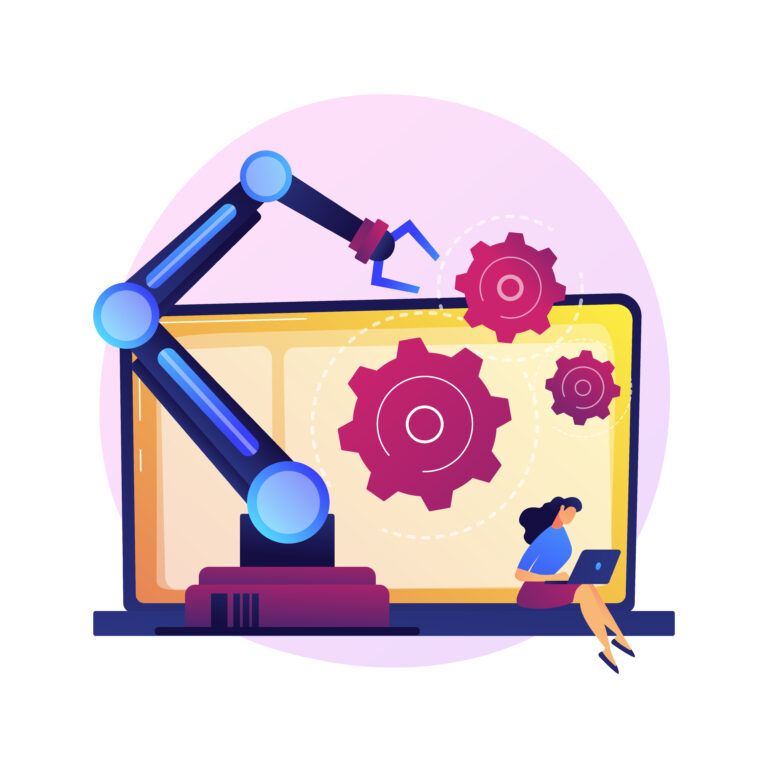Hyperautomation: What You Need to Know
You’re likely hearing the term “hyperautomation” more and more recently. But what does that mean? Hyperautomation refers to the use of advanced technologies and business process management (BPM) tools, like artificial intelligence (AI), machine learning (ML), and robotic process automation (RPA), to automate tasks that were once completed by humans.
In addition to the conquering of repetitive tasks, hyperautomation also exemplifies the innovation of automation in general, and how it’s continuously improving.
In this article we’ll discuss:
- The increased use of artificial intelligence (AI) and machine learning (ML)
- Expansion of business process automation (BPA)
- Integration with the Internet of Things (IoT)
- The importance of customer experience
- Improved security and compliance
Increased use of artificial intelligence and machine learning
Artificial intelligence reshapes how computers think and solve problems. Traditionally, computers can only follow very precise rules instructed by humans through strict code. AI grants machines their own sense of reasoning so they can tackle more unpredictable jobs, like driving cars or performing surgery.
By 2035, AI can potentially boost profits by an average of 38%. It’s no wonder half of enterprise processes already use it. What can artificial intelligence do for your business?
- Large language models: Upends the way humans work with computers. We’re only in the early days, but in the future, we’ll be able to ask questions and send commands conversationally.
- Generative AI: Computers can also talk back to us. They can trawl colossal subsets of information to answer our questions, explain concepts, and summarize points. Beyond the written word, AI can also turn text inputs into striking visuals.
- Virtual agents: Here’s where conversational advances converge. Computers can pose as service representatives to chat with customers and resolve issues.
AI is also ushering in a new era of IFTTT. Generative AI, like ChatGPT, births endless spin-offs, many of which are working to deploy virtual agents capable of minding their own responsibilities. Ask for help with a certain job, and generative AI can formulate a strategy to potentially run autonomously.
Booking flights, coordinating travel, performing competitive research, and designing processes turn into a long sequence of background tasks computers can create and run on their own.
Expansion of business process automation
Businesses are automating repetitive and tedious tasks with process automation. Use it to create self-driving automation that generates reports, populate spreadsheets, submit orders, request approvals, and more. Not surprisingly, 8 out of 10 organizations have adopted automated business processes or plan to do so this year. Watch how tools like ChatGPT AI will help automate business processes in the future.
One of the top technologies underpinning hyperautomation is robotic process automation. RPA tasks perform repetitive work the same as a human would. Duties that involve a recipe of keystrokes and clicks—swivel chair tasks—are best for RPA.
RPA bots can transfer information between databases, log into applications, or pull customer data into a single-view dashboard.
A huge advantage of RPA? It can integrate with legacy systems to help businesses automate without replacing their existing infrastructure.
According to Gartner, 90% of large organizations have already activated RPA initiatives, making it a must-have in any hyperautomation toolset.
Integration with the Internet of Things (IoT)
IoT is poised to revolutionize how businesses operate, and hyperautomation will play a key role in this transformation. How?
- Telematics: McKinsey estimates that players in heavy equipment industries have boosted profitability by 4–10% through predictive maintenance alone. Hospitals, retailers, manufacturers, and sales fleets use similar sensors. By monitoring equipment, vehicle, and asset performance in real-time, AI/ML models identify the best times for repairs. The cross-section of data like off-peak usage times and equipment life cycles helps organizations reduce unplanned outages and boost uptimes.
- Inventory sensors: Monitor product availability in real-time. Sensors can keep track of stock levels and coordinate with workflows to trigger reorders before stockouts. A real-time peek into product movement can also help organizations take advantage of fleeting trends before the opportunity passes.
- Customer usage: Look around your home: Many traditionally analog products now rival the number of sensors in your smartphone. Refrigerators, pet feeders, and thermostats collect usage information. Companies need an iron-clad business process management strategy in place to take advantage of this bounty of insights.
IoT revolutionizes how businesses operate. Your hyperautomation suite will play a key role in capitalizing on the data yield.
Focus on customer experience
AI-driven personalization was a golden egg exclusive to highly specialized firms like Netflix or Spotify. Now, advancements in artificial intelligence open the winning marketing strategy up to more players.
Organizations can use hyperautomation to provide an exceptional customer experience. Recommend products based on a user’s buying history or on super niche slices of your consumer base.
Instead of suggesting identical offerings to every customer, AI can also assemble product bundles on the spot. In the near future, artificial intelligence might even cobble together available features or colors to kindle recommendations with bespoke products that don’t exist on the shelf.
Improved security and compliance
AI and machine-learning models are a boon to organizations looking to fight fraud. From banks to retailers, data science tools can help beat bad actors.
- Advanced behavioral biometrics: Fingerprinting, facial scans, and even the signature ways you tap and swipe on your phone screen can help websites root out imposters.
- Behavioral analytics: With the sheer processing power of hyperautomation technologies, you can add more data points to your decision-making. Banks quickly comb merchant preferences, spending categories, and device locations to verify purchases.
- Predictive modeling: Conventional analytics require massive man-hours to sift through thousands, if not millions, of transactions. AI and ML tools untangle large volumes of data at faster speeds. Use this information to train systems to better forecast suspicious activity.
By automating tasks such as data entry and processing, businesses can reduce the risk of human error, which can lead to security breaches or compliance violations.
How does hyperautomation boost Hyper-Productivity?
Hyperautomation can be a game-changer for your organization in more ways than one. One of the most significant ways you can transform your workflow is by boosting Hyper-Productivity. Instead of simply being productive, your team can become Hyper-Productive, completing work faster and more efficiently than ever.
With all of the different technologies to tap into, there are a variety of moves that can tip the scales toward success. But one thing is clear: without a centralized command center, it’s impossible to maintain control of the data generated by hyperautomation. To do so, business process management will be an even more pivotal part of your tech stack. See what you can do to get your organization ready for the future of hyperautomation.



